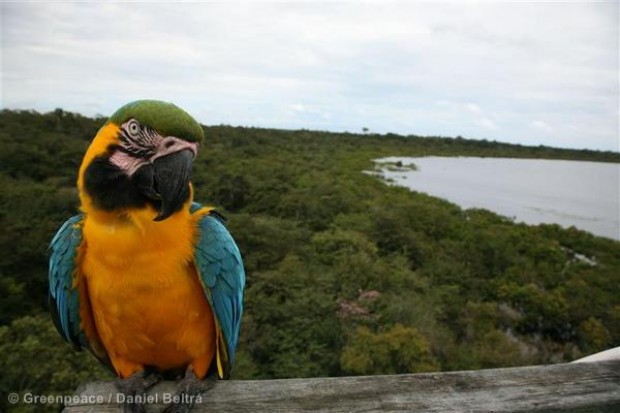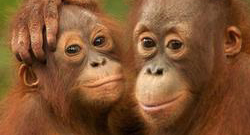Soya traders, companies, NGOs and the Brazilian government met today to debate the future of the soya moratorium - a seven-year-old scheme that stops the soya industry from carving up the Amazon. We managed to buy another year - but that's just twelve short months to find a permanent solution.
The Soya Working Group (GTS) agreed to extend the moratorium until the end of the year. Until that time, major traders will not sell soya that may be linked to deforestation in the Amazon. Since deforestation has been on the rise in the rainforest recently, this is a significant outcome.
The Soya Moratorium was the result of a Greenpeace campaign in 2006, which exposed big brands that were purchasing crops linked to deforestation in the Amazon. And it has, without doubt, helped protect the Amazon, proving that forest protection is good for business too.
The moratorium has been championed by a growing coalition of businesses, third sector organisations and the Brazilian government. McDonald’s led the way in calling for the moratorium to continue beyond January 2014, and was joined in this by Carrefour, Nestlé, Tesco, Ahold, Marks & Spencer, Waitrose, Sainsbury’s, Asda and Unilever among others.
A couple of months ago, the Brazilian government announced a 28 per cent increase in Amazon deforestation rates. This was the first data on Amazon deforestation to see the light of day since Brazil controversially changed its Forest Code in 2012. This move, backed by the country’s powerful agriculture lobby, weakened legislation on forest conservation and land use.
Worryingly, the two states that produce the most soya, Para and Mato Grosso, have experienced the greatest increase in deforestation since 2012. Deforestation in Mato Grosso went up by over fifty per cent in one year, and jumped more than a third in Para. Only 2 square kilometers were actually authorized for clearing - representing just 0.08% of Para's area. In Maranhao, a new frontier in soya production, deforestation has increased by over forty per cent.
By renewing the moratorium one more time, the soya traders have shown they recognise their customers’ demands for Brazilian soya without deforestation. But it will be an enormous challenge to ensure sufficient safeguards are worked out and agreed by the end of 2014, especially with deforestation on the rise again and new soya export infrastructure being in the pipeline at the heart of the Amazon.
The Soya Moratorium currently monitors 62 municipalities responsible for almost all of the soya produced in the Amazon. In this immense region, over 8 million hectares are covered by forested lands suitable for soya cultivation, but none of it is officially protected. That’s three times the size of Belgium.
Brazil’s altered Forest Code centres on a system where farmers register their properties called the Rural Environmental Registry (CAR). It’s still being developed and needs to be fast-tracked to be in any way effective.
The task ahead for the Soya Working Group is to design a mechanism to replace the moratorium once it expires. This is to be developed and tested over 2014. It will focus on the implementation of the Federal CAR (SICAR), but much more is needed.
Ultimately, any agreement that replaces the Soya Moratorium must be an even more robust system to prevent these forests being lost to greed.




